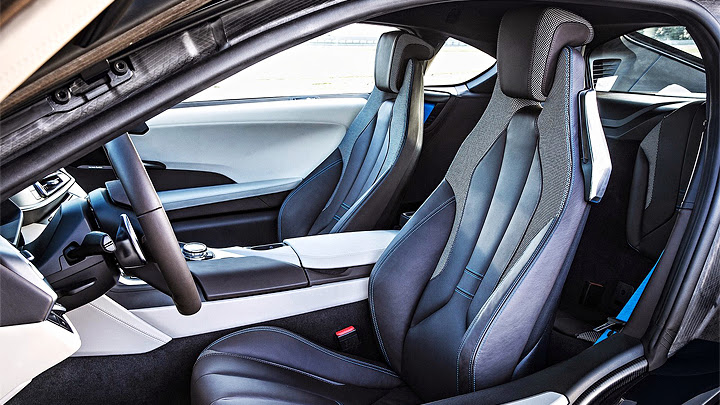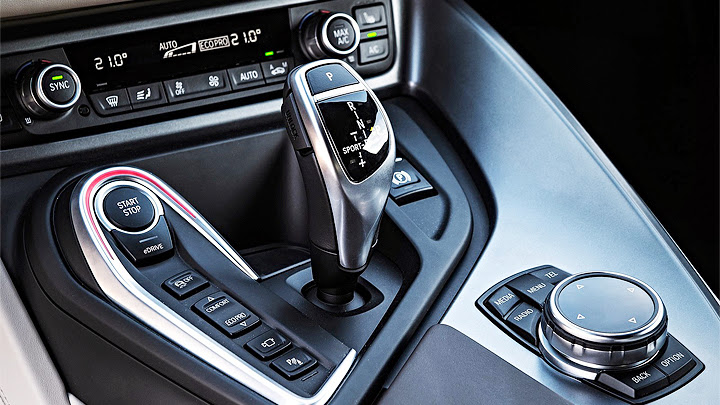
Remember when something (or someone’s work) is considered “ahead of its time”? This idea of success and/or acceptance depending on when it’s intended to be achieved applies very well to the latest BMW’s case, although with the opposite situation: today couldn’t be a better time for i8 to appear. After all, until the 1990s the clients would actually regret its ecological side, instead of appreciating it, because in a sports car would be seen only as a way of limiting its performance. And even after low-pollutant technologies started to be seriously considered, if it was already hard to offer urban cars with the reduced capabilities and high prices of that time, selling an electric sports car until not so many years ago would be a Herculean task.
This is why BMW waited a little before acting. Specifically, waited until the ecological “fever” settled down and turned into a trend with real potential for the car industry’s short-term future. This was the moment, then, when the i division was founded, around 2007. Despite being much more expensive, creating green cars from scratch results efficient because these projects are dedicated exclusively to hybrid and electrical propulsions from their very beginning, instead of being simple adaptations executed on other cars. For BMW, all of this converges into the LifeDrive architecture, whose parameters regarding aerodynamics, internal space, powertrain and weight are very different from the ones of common combustion-propelled cars’.








Examples of such parameters can be given while explaining the i platform’s name, in fact. “Life” represents the passenger cell, which still uses the series of electronic safety systems seen in any luxury car of nowadays but relies mostly on the use of CFRP. The active safety is guaranteed with its high rigidity, while the reduced weight compensates heavy components such as the battery (the entire car weighs only 1,490 kg). Besides, it barely deforms in case of accident and yet is easier to cut than high-strength steels, which makes rescuing passengers much easier. BMW also mentions this structure’s repairs can be done in most cases at any i dealer, using a series of time-saving processes and having costs comparable to those of other BMW cars.
“Drive”, on the other hand, stands for the aluminum cell which encloses the powertrain: the combustion engine is BMW’s very first three-cylinder engine, a TwinPower Turbo 1.5L of impressive 231 hp, which is the highest specific power ever achieved by this company. The electric engine reaches 131 hp and uses a lithium-ion battery placed at the center of the car for bigger protection. With a maximum combined output of 362 hp, i8 uses a six-speed automatic transmission for the rear wheels, while the front axle is powered by the electric unit. There will be five different combinations of power management through driving modes, enabling the car to reach 94 miles per US gallon or 4s4 from 0 to 100 kph, with a limited top speed of 155 mph.








If you started to feel a strong déjà vu since i8’s name and looking to its pictures seems to have only increased it, the reason must be remembering of the other use BMW has given to the number eight in its history. The new car turns even more interesting to analyze because it can be considered a conceptual successor to the 8-Series, which was the company’s flagship coupé from 1989 to 1999. i8 is incomparably more modern, but it does carry over some of the old car’s design elements, such as the sporty opulence, brought by big length and width paired to very short height, or all the elegance obtained from achieving the necessary aerodynamic optimization (Cd of only 0.26) exclusively with the car’s natural design, instead of adding spoilers.
However, looking at i8’s trendy external strong creases and blue accents doesn’t take long to remind that it isn’t even a little bit focused on the past. The cabin combines the company’s traditional quality level to an attractive design based on light colors and horizontal shapes, both known for increasing the space feeling. i8 brings all the comfort and entertainment items offered by any other car in its class, including the iDrive infotainment system through an 8.8” screen and several options of colors and textures for the leather coating. BMW i8 is expected to hit the streets around 2014’s second trimester, starting at £ 99,845 in United Kingdom, € 126,000 in Germany and US$ 135,925 in United States.
Lançamento no Brasil (10/09/2014)
No mesmo evento que marcou o début do i3 no Brasil, também foi feita a apresentação do irmão maior i8. A BMW o apresenta como a próxima geração de carros esportivos, porque o uso extensivo de tecnologias de ponta lhe traz desempenho no nível da maioria dos concorrentes diretos (aceleração de 0 a 100 km/h em 4,4 segundos), mas com o consumo de impressionantes 47 km/l. Façanhas da construção que combina estrutura em alumínio à carroceria de fibra de carbono, que reduziu o peso do veículo o suficiente para compensar a adição de todo o sistema elétrico de um automóvel de propulsão híbrida – são apenas 1.490 kg.
Aqui, o motor a combustão é um 1.5 de três cilindros movido a gasolina, que gera 234 cv. Já o elétrico gera 133 cv, para chegar ao total combinado de 367 cv. Tudo isso é combinado ao altíssimo nivel geral que a BMW impôs aos modelos da nova subdivisão i: eles contam com uma linguagem de estilo própria, que combina linhas e volumes de aspecto mais futurista a vários detalhes na cor azul. A cabine, por sua vez, tem o mesmo nível de tecnologia (ou um maior) trabalhando a favor do conforto e da segurança. No Brasil, este cupê será vendido somente por encomenda, em uma versão de acabamento única que custa R$ 799.950.